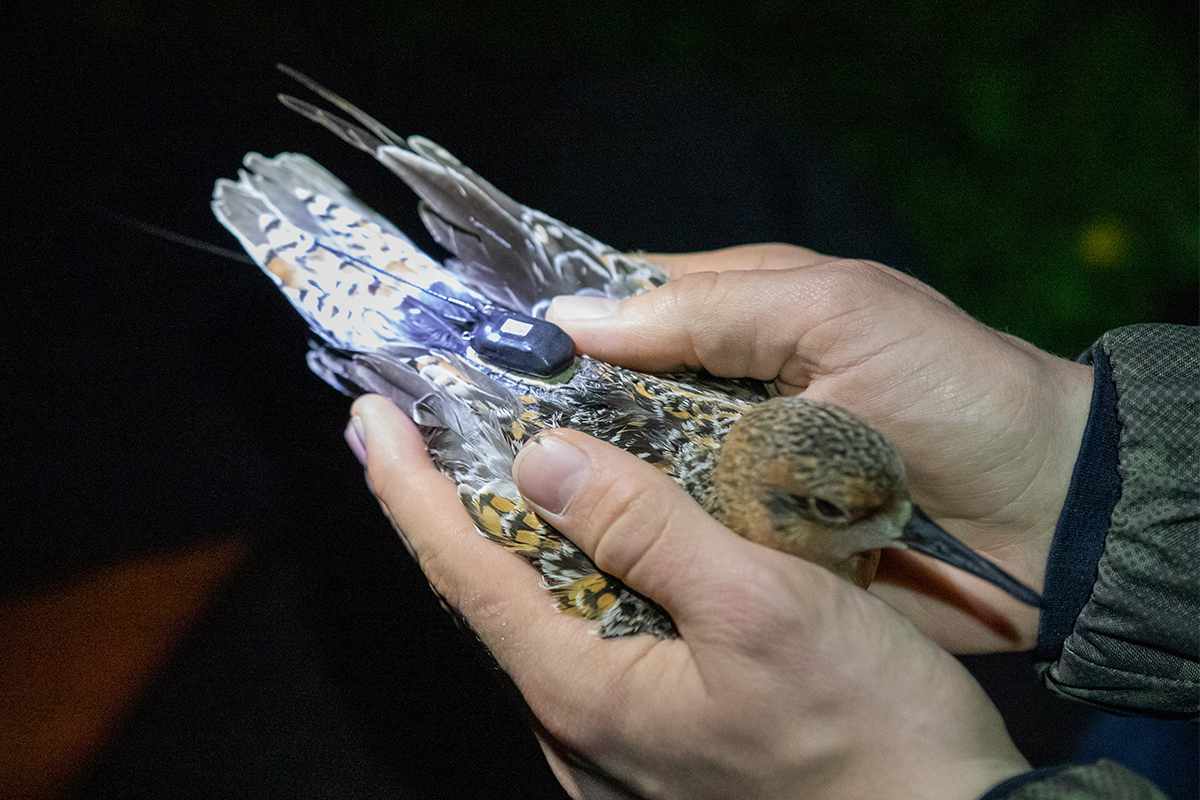Satellite-tagged red knots will cross borders this summer, while home-stuck scientists are forced to track them online to the High Arctic
We expect that most will travel to Siberia (belonging to the canutus subspecies), but some may actually travel to Greenland and NE Canada (islandica subspecies, which is barely distinguishable from canutus). The tracks can be followed with daily updates on this website (filter animals by species and select ‘Calidris canutus’, whereafter birds can be identified by their names, which are small German Wadden Sea islands).
The tags, PinPoint GPS-Argos tags (Lotek ©), have a limited lifetime of 60-80 days (as they do not contain a solar panel to refuel the battery) and for this reason the tags been have been glued to the birds’ back (rather than using a harness that stays on the bird lifelong), enabling the birds to shed their tag during autumn molt. They have been programmed to collect a single GPS position per day and transmit these to Argos satellites every third day. Although these tags may deliver only a small number of position estimates relative to classical PTT tags, they come with a clear benefit: the spatial precision of the GPS measurements (error of 3-4 meters) is much higher than that of PTT tags based on Doppler effect (error of 150 meters). With this in mind, we have the ‘silent hope’ that we can locate, from outer space, each bird’s nest in the High Arctic. These may be the only nests that we will find this summer, if covid-19 screws yet another ‘dream trip’, which is the planned expedition to the Siberian breeding grounds.






All photos by Jort van Gils.